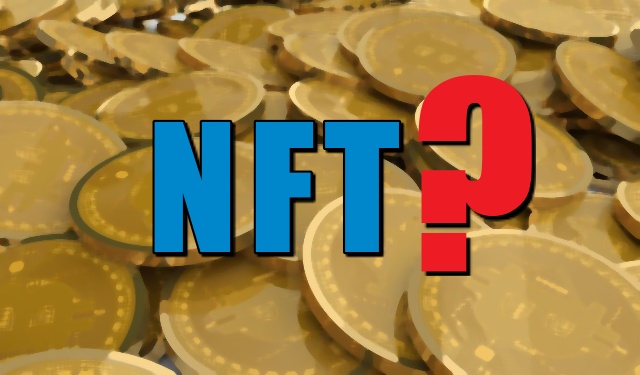What Are Non-Fungible Tokens (NFTs)? Use Cases, Pros and Cons
I have the hobby of collecting old coins and trump cards of WWE and Cricket.
Cards or Coins each collectable have unique characteristics, and they can’t be replaced with others.
Like one player card can’t be replaced with another player such as coins or any valuable collectables.
These non interchangeable are also called Non-Fungibles.
In most cases, many things are fungible like our fiat currencies or cryptocurrencies if you give me $10 and I return you another $10 immediately it will not make any differences but not in case of collectables like an in-play card if I give you player X and you give me Player Y in exchange makes no fair deal.
In the blockchain world, non-fungibles have a vital role and the emergence of many non-fungible tokes proves it.
What are Non-Fungible Tokens (NFT)?
Fungible in the crypto world means you can exchange 1BTC for another 1BTC or any other tokens; for example 1 Golem-ERC20 token is identical to another Golem token. Similarly, you can say the same thing for OmiseGO tokens, they are fungible.
But Non-Fungibles cannot carry the same value. The best example is CryptoKitty, a blockchain based game that allows you to purchase, collect, breed virtual cats, here one CryptoKitty is completely different from another CryptoKitty.
Even though you can trade one Kitty for another from a trade perspective if the two parties agree to do so but otherwise, they are not created equal.
To get a clear picture of non-fungibles, we have to look at the difference between Fungible and Non-Fungible.
Differences Between Fungible and Non-Fungible Tokens.
| Fungible. | Non-Fungible. |
| Interchangeable. | Not-Interchangeable. |
| Uniform. | Unique. |
| Common. | Rare. |
| Divisible. | Non- Divisible. |
Now you understand what NFTs are but it is still not clear what NFTs role in the crypto world where there are many coins and tokens already ruling.
Use Cases Of NFTs.
Gaming.
As you know in many games you have to spend some tokens that are specifically made only for that particular game for moving to another level or upgradings.
NFTs are the best fit for the games where coveted items can be easily transferable solving one of the biggest annoyances that avid gamers face.
Collectables.
CryptoKitty’e is the best example for collectables. Also it’s even possible to use NFTs as traditional collectors’ items such as baseball cards, coins, and stamps.
Art.
We all know that for digital artists it is hard to protect the copyright; but with the help of NFTs, it is easy to find out who is using copyrighted material with the help of blockchain offering proof of ownership.
Also, artists can receive a bigger cut of payment for their artwork, removing the need for third-party fees, offering peer-to-peer payments.
Sports.
Counterfeit tickets and merchandise do a lot of damage to sports revenue.
Using NFTs to counter the damages is the best option because of blockchain immutability nature.
Identity.
Maintaining the legal records like education qualifications, medical history or any goods assets records are tough but NFTs could digitize all of this, and give greater control over data.
Virtual Assets.
The Ethereum Name Service and Unstoppable Domains already turned each domain name into non‑fungible tokens so they can be bought and sold, soon other platforms like Cryptovoxels allow you to buy plots of virtual land.
Real World Assets.
Work is underway for real-world assets like real estate to be tokenized on the blockchain, but it’s possible to tokenize real-world assets, with NFTs being used to prove that someone owns a piece of land.
Standards To Create NFTs.
As you know, to create any token needed a blockchain platform.
And here are some blockchain platforms with different standards allowing NFTs creation.
ERC-721.
Ethereum became the first blockchain to allow NFT creation in its ERC-721 standard.
This standard became popular in 2017 after the CryptoKitties rapid adoption.
Like many ERC standards, ERC-721 tokens are driven by smart contract code that embed the unique details that make them rare or desirable. This metadata can be stored on the blockchain, or off.
Simply put ERC-721 standard only focused on tokens to be distinguished from each other, granting the ability to attach tokens to different types of assets and verify their ownership on the blockchain.
ERC-1155.
After the ERC-721 ERC-1155 was created as its successor.
One major difference in ERC-1155 is this standard allows both fungible and non-fungible items in the same smart contract.
Also, in this standard single deployed contract may include any combination of fungible tokens.
Apart from ERC-721 and 1155, there are ERC-994, ERC-420, ERC-809, ERC-1201, ERC-998 standards also allow NFT creation.
EOS Standard.
After the Ethereum EOS another blockchain platform also launched its own dGoods standard.
Similar to ERC-721 and 1155 dGoods developed by Mythical Games, Greymass, Cypherglass, Meet.One, Scatter and Blocks.io.
Even standard rolled out first on EOS mainnet it is open for other blockchains to adopt.
Platforms Where You Can Buy NFTs.
NFT exchange platforms play an important role in spreading NFT boundaries.
Here I listed some platforms where you can index and sell/transfer NFTs.
OpenSea.
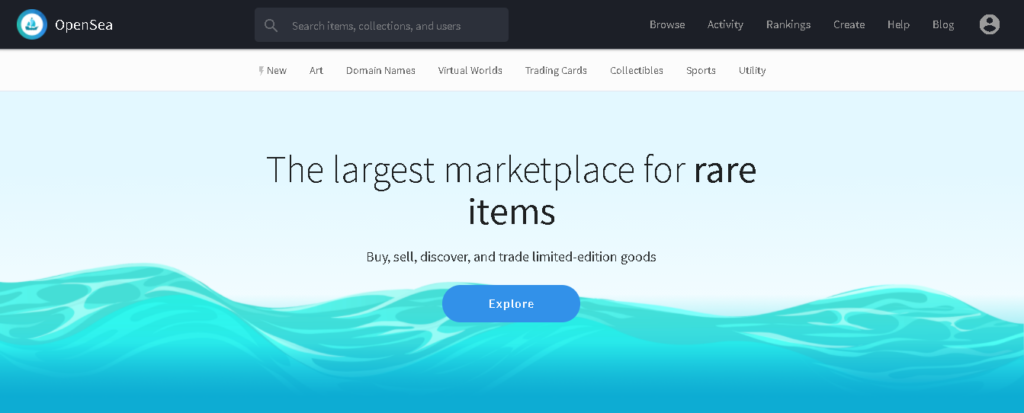
OpenSea is the popular NFT marketplace.
The platform is like eBay focusing on every type of Non Fungible Tokens and has an auction feature also allowing you to sell or buy art, game items, collectables, virtual stuff, domain names etc.
Rarible.
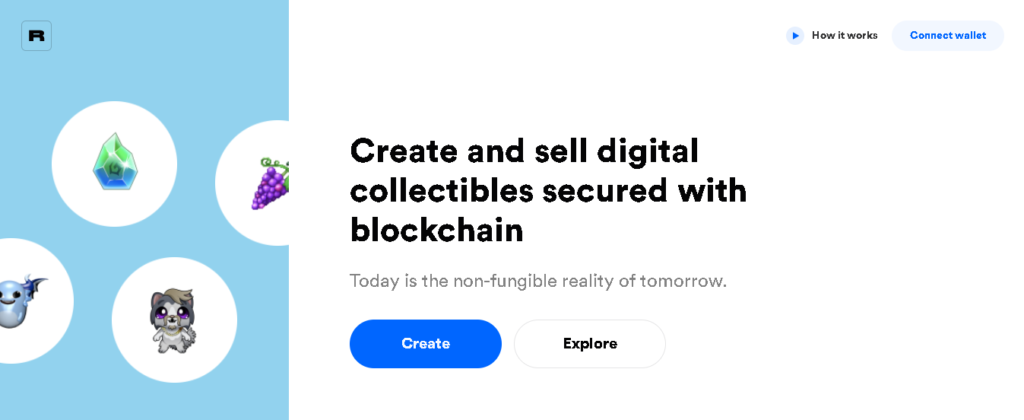
Like OpenSea, Rarible also allows you to list or buy NFTs.
But the stand out feature of Rarible is they give “royalties” to the creator of NFT and the governance token called RARI, which allows users to participate in voting on important matters.
SuperRare.
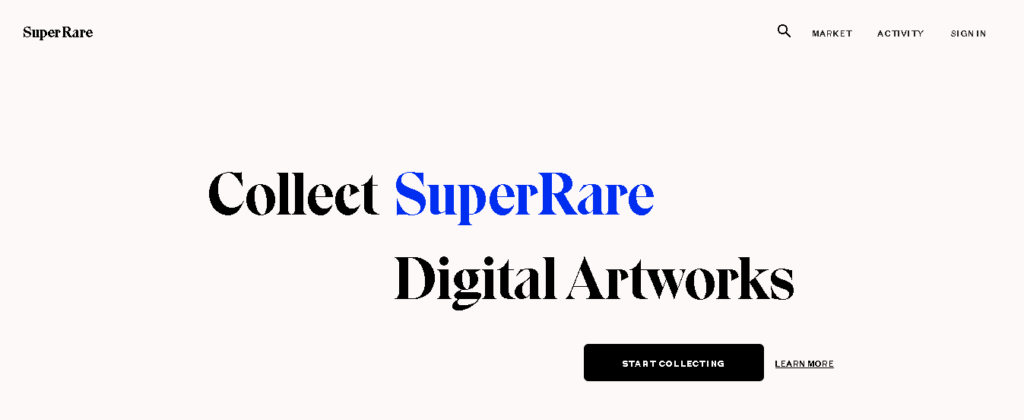
This market place only focuses on rare and unique digital artworks.
It features a simplified experience, social profiles, mobile app, live auctions, extended payment options and improved management.
Enjin Marketplace.
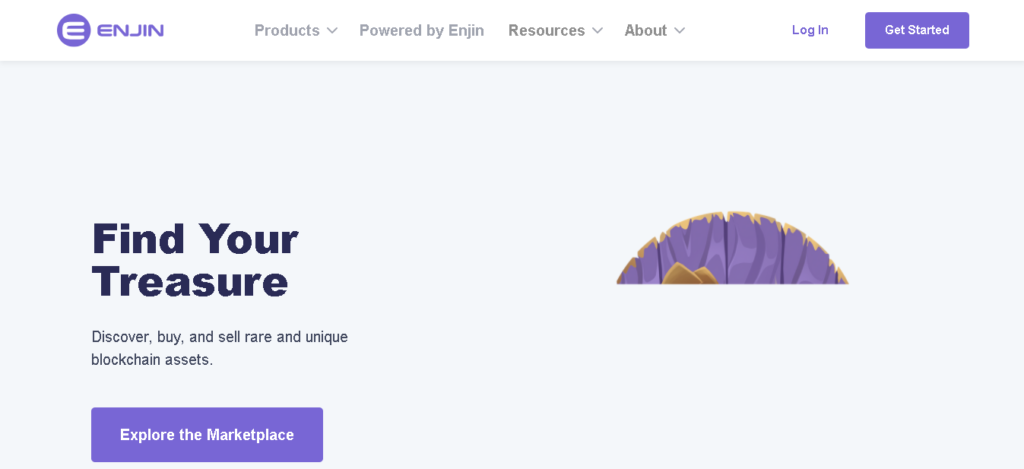
Enjiin market place solely focuses on enjin based NFTs. It allows you to discover, buy and sell NFTs from the web based interface and also the native Enjin wallet.
Decentaland.

Decentaland is not the marketplace allowing you to buy or sell NFTs. Rather, it is a fully decentralized digital world like virtual reality.
In this virtual land, you can purchase plots of land and monetize it with shops, advertising and art after selling it on for the profit.
Now you have understood how NFTs are useful, standards to create one and platforms where you can buy or sell NFTs but you haven’t known the good and bad side of it.
Pros and Cons of NFT.
Pros.
- NFT can be a new revenue stream for gaming, sports, art and technology.
- Like Decentaland, NFTs can transform our attitudes toward ownership and make it possible to own a real-world asset that’s thousands of miles away.
- Many crypto unknowns could introduce cryptocurrencies for the very first time through NFTs.
Cons.
- NFTs are still relatively new, so building DApps for non‑fungible tokens can be tricky and time consuming.
- NFT games can have a ”hot potato” effect. Players buy an asset in the hope of selling it on for a profit, but if the market collapses, they can make a nasty loss.
- Much more simplification needs to understand the NFT, especially for the people who know nothing about blockchain.
Conclusion.
NFT is still an emerging technology, and it needs more exposure.
Now it seems big companies like IBM, Ubisoft, Vodafone, Nike, Samsung are exploring NFTs use cases which give a boost to NFTs further adoption.
If you got any useful insights from the post, then do share with your family and friends.
